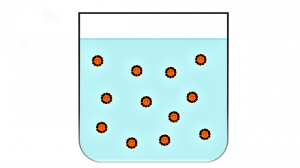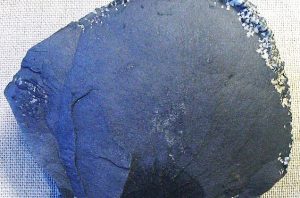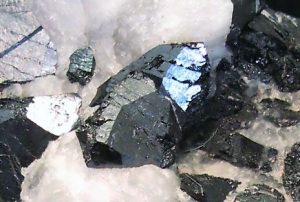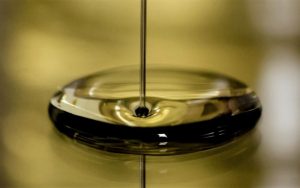Emulsion
Generally, within the human daily meals are included butter or margarine, milk, cream, cream and custard, espresso, mayonnaise, among others. At least one of them is consumed by each earth habitant, since they are something "vital" in the meals. Although it plays an important role, very few people know that they are created thanks to a process called emulsion, which is not only part of food production, but also within other areas such as pharmacology, metallurgy and photography.

Related topics
Crystallization, boiling, hydrolysis, leaching, pyrolysis, saponification, vulcanization
What is an emulsion?
When talking about what emulsion is, it is nothing more than a mixture which seeks to bond two liquids of different compositions relatively homogeneously. The joining system seen in simpler terms is very easy to understand; the main liquid is intended to be completely diluted in the other. The process that contemplates emulsion preparation is called emulsification. Usually the emulsions that are commonly made are those of oil or water with various dietary fats that usually come from nature. In slightly deeper terms, emulsions are included in physics as two-phase systems of matter called colloids.
Definition
Emulsion is defined as a colloidal type process of matter, which is separated into two phases which includes two liquid elements that have relatively miscible properties, so that, one of the two ends up dissipated or attached to the other as globules.
The first phase is the disperse, also known as the continuous or internal phase in which one of the liquids is disintegrated, while the second phase is the discontinuous one, also called internal phase, in which the liquid is integrated to the one that is already disintegrated.
Characteristics of the emulsion
Emulsion is a term very rarely heard by people, but despite this, it has great importance in many areas such as cooking and medicine. Some of its most outstanding characteristics are:
- This process is used by chefs and kitchen lovers, but above all by Italian families, who like to cook different sauces and creamy dishes. But it is also essential to create products like cream or butter with this tool.
- Within medicine, it is widely used in various vaccines that use fatty products such as soybean oil to create anti-pathogens.
- Within the area of care, many companies use these methods to make facial creams that have a more or less liquid consistency.
- The emulsion is also found within the photograph and refers to the suspension of a silver bromide in gelatin, the same refers to one of the photographic material which is sensitive to light excess.
Types
Within the emulsion types we find 3 variants, which differ in their application process:
Direct emulsion
Is the most common type of emulsion among the 3 variants, it states that the dispersion phase is a fatty substance called lipophilic substance while the continuous phase is the addition of water called hydrophilic phase. These are mainly associated with milk creation, mayonnaise and some paintings such as the ones used at home.
Reverse emulsion
As its name indicates, this type of emulsion does the opposite of the direct type process, in other words, the hydrophilic stage is performed first and then the lipophilic stage. This is usually associated with butter creation and facial creams.
Multiple emulsion
Within this type of emulsion the phases work differently, since in the first dispersed phase, we have an inverse process, but in the continuous phase it is blocked with an aqueous liquid. This type is basically given in pharmaceutical products in order to obtain delayed releases.
Process
Emulsification system will always consist of joining two elements, one of which must comply with the emulsifying properties. However, it should be noted that the different properties of each must be known:
- Its functions within the phase continue.
- Its existing relationship between the internal phase and also the external one.
- The size of each emulsion particle.
- The relationship that exists between the continuous phase and its forming particles taking into account their ionic charges.
- All the properties that act in the discontinuous phase.
How it differs from suspension
When the theoretical bases of what the emulsion is and what the suspension is are analyzed, it can be understood that only a small line of difference separates them. While it is true that emulsion is the colloidal separation of a liquid within another, the emulsion is also a colloidal separation, but of a solid within a liquid, for example salt in water.
Emulsion in medicine
In medicine, there is something called microscopic emulsion, which is mainly used to distribute vaccines equitably at a molecular level and to kill microbes or microorganisms. In general, these emulsions are mainly used as nano emulsion techniques made from soybean oil and are between 400 and 600 nanometers in diameter.
Although it may seem strange, this is not a chemical process, unlike other siblings that make up part of anti-pathogenic families, but rather a physical process, in which, despite the fact that the drops are small, they present a great surface tension in their composition and that is why the power of union with other lipids is much stronger.
Emulsion in gastronomy
Within gastronomy, the term emulsion fulfills diverse roles, generally they are used in sauces, but also in the elaboration of different dishes such as pasta creams. When talking about emulsion in the kitchen, one of the elements most used to produce this effect is the egg.
To create mayonnaise, eggs are mixed with oil in a mixer and this is responsible for giving the homogeneity corresponding to the mayonnaise sauce. At the same time, the egg is also included in the final stages of the elaboration of many Italian dishes in which the pastas are left with a creamy consistency and in harmony with the other ingredients.
Examples
- Mayonnaise sauces.
- Pink sauce.
- Dressing sauces such as honey and mustard, or passion fruit sauces which can be combined with salads.
- The demiglase sauces of red meats such as bourbon, BBQ, cocktail sauce, apple sauce.
- Different skin care blisters for skin care go through an emulsifying process.
- Within the eccentric cocktail, in drinks such as whiskey sour which carries among its ingredients the white of an egg or bull shot that carries tomato juice and meat broth among its ingredients.
How to cite this article?
Briceño V., Gabriela. (2019). Emulsion. Recovered on 3 May, 2025, de Euston96: https://www.euston96.com/en/emulsion-en/









